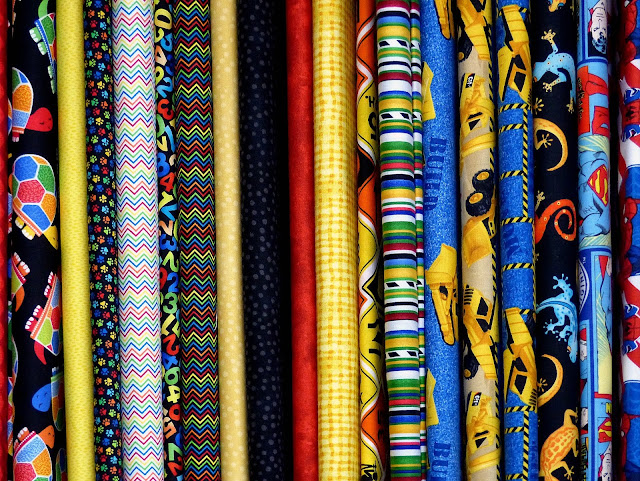July 13, 2009
Printing your own fabric pt. 1
This may be a future series. I recently talked with someone who has been custom printing his own fabric for a few years now. There are several steps involved with printing your own fabric but it isn't as hard you might think. I am talking about having your designs professionally printed by a fabric converter. There are options that have become available to home hobbyists to print their own fabric, but it is extremely expensive. If you were to take this up as a business, you would need a printer who can print hundreds of yards at an affordable price or you would never make any money.
I have to say I admire some of the up and coming print designers. I admire their skill and ability to create a cohesive collection 1-2x/year. Many of these designers have training in the arts, either the fine arts or graphic design. On top of that, they have some experience working with cloth as seamstresses and pattern makers. I wish I was more skilled at designing prints. I think I could do it but I would need to dedicate a great deal more time to it. Maybe someday I will get up enough gumption to try it and print my own designs.
Traditionally, a textile designer creates their artwork using traditional media - paint and a brush, markers, pastels. At the very least then and now, an artist carries a sketchbook around with them everywhere. They are able to capture patterns and designs in the world around them and translate them into a fabric. They can pick colors suitable for apparel or interior fabrics.
I think most modern textile designers today create their artwork using computer aided design (CAD). Adobe Illustrator and Photoshop are the primary tools. (Free versions include Paint or Gimp, Inkscape). Artwork created in Illustrator or Photoshop is not immediately ready for printing. The artwork must be made into a repeat, created by a special filter or plug-in. The idea is to offset the image 50% horizontally and vertically and fill in with the offset parts. Look for a tiling filter or tool in your program to do it automatically. Once this step is taken, the artwork is ready to be printed by some methods (Spoonflower, for example).
For mass production, the artwork goes through some additional steps though I am sure the technology has changed since I was last exposed to it. There are specialized CAD packages in the industry that some artists use directly or through a trained technician. Artwork is brought into the software and the design is fine tuned through color reduction, recoloring, etc. The design is made into a repeat. The process is rather involved because digital artwork has to be translated into the chosen printing method. And there are several methods out there - heat transfer, roller printing, block, screen printing and digital. The method chosen depends on the converter's ability and/or appropriateness for the print.
If you want to be a textile designer, there are two main approaches. You can create artwork and shop it around to existing fabric manufacturers/printers/converters. Michael Miller, Westminster, and others buy the rights or license artwork from designers. Other designers print and sell their own fabrics. In either case you don't necessarily have to understand all the ins and outs of textile manufacturing and printing. Fabric converters/printers can take your artwork and prepare it for printing (their may be an up-charge or setup fee).
Anyway, more to come as I find this to be an interesting topic....
Subscribe to:
Post Comments (Atom)


No comments:
Post a Comment